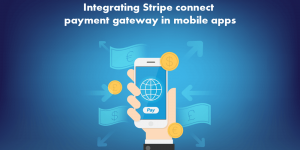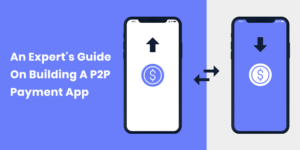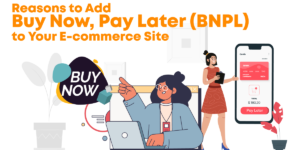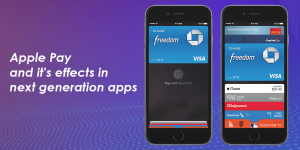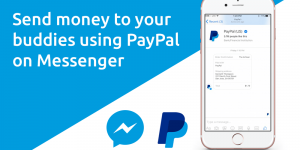
You have built an impressive e-commerce app but there is one critical piece missing: the ability to accept payments. Payment gateway integration is the bridge between your customers’ willingness to buy and your ability to collect revenue. Without it, your beautifully designed shopping cart becomes nothing more than a wishlist. How to integrate payment gateways in your e-commerce app is not just a technical checkbox, it is the foundation of your entire business model.
This process involves connecting your application to secure digital payment processing systems that handle everything from credit card validation to fund transfers. Get it right and you will create a seamless checkout experience that builds customer trust. Get it wrong and you will face abandoned carts, security vulnerabilities and lost revenue.
The integration journey requires careful planning across multiple stages:
- Selecting the right gateway provider
- Configuring frontend payment forms
- Building secure backend endpoints
- Rigorously testing before launch
You will need to balance user experience with security requirements while managing costs and timelines.
Ready to transform your app into a revenue generating machine? Let us walk through each step.
Table of Contents
- Understanding Payment Gateways and Their Role
- Types of Payment Gateways and Choosing the Right One for Your Business Needs
- Prerequisites You Need to Follow
- Preparing for Integration: Setup Steps You Need to Follow
- Security Best Practices for Your E-commerce App
- Managing Integration Timeline And Costs Effectively
Understanding Payment Gateways and Their Role
A payment gateway is a technology that captures and transfers payment data from your customer to the payment processor then returns transaction approval or decline information back to your e-commerce app. It is like a digital version of a point-of-sale terminal in a physical store.

➢ Why You Need Payment Gateways
You need payment gateways because they create a secure connection between three important parties in every online transaction:
- Your customer
- The payment processor
- The acquiring bank
When your customer clicks “Pay Now” the gateway encrypts their sensitive payment information credit card numbers, CVV codes, billing addresses and sends this data securely to the acquiring bank or payment processor. This encryption protects both you and your customers from fraud and data breaches.
➢ How Payment Processing Works
- Here is how the payment processing flow works:
- Your customer enters payment details on your checkout page
- The gateway encrypts this information using SSL/TLS protocols
- Encrypted data travels to your payment processor
- The processor forwards the request to the card network (Visa, Mastercard, etc.)
- The card network contacts the issuing bank for transaction authorization
- The issuing bank approves or declines based on available funds and fraud checks
- The response travels back through the same chain to your app
- Upon approval funds are held and later settled into your merchant account
This entire process happens in seconds, creating a smooth checkout experience for your customers while keeping their payment information secure a crucial aspect when building a secure payments app.
Types of Payment Gateways and Choosing the Right One for Your Business Needs
When you are building an e-commerce app selecting the right payment gateway type directly impacts your development timeline, costs and customer experience. You need to understand the four main categories available to make an informed decision.
1. Hosted Payment Gateway
A hosted payment gateway redirects your customers to the payment provider’s secure page during checkout. PayPal Standard and Stripe Checkout are classic examples. You get quick implementation and minimal PCI-DSS compliance burden since sensitive data never touches your servers.
The trade-off? You sacrifice control over the checkout experience and customers leave your site momentarily which can affect conversion rates.
2. Direct Post Gateway
With a direct post gateway, payment data goes directly from your checkout form to the gateway’s server while customers stay on your site. You maintain brand consistency throughout the purchase flow but you will need to handle some security responsibilities yourself.
3. Self-Hosted White-Label Gateway
A self-hosted white-label gateway gives you complete control over the payment interface while leveraging a provider’s backend infrastructure. You can customize every aspect of the checkout experience to match your brand identity. This option requires more development resources and carries higher costs but you get the flexibility to create unique payment flows that set you apart from competitors.
4. Custom Payment Gateway
Building a custom payment gateway from scratch means developing your own payment processing infrastructure. This approach demands significant investment both financial and technical but delivers unmatched control and customization possibilities.
Your selection criteria should include:
- Budget constraints and ongoing maintenance costs
- Required level of checkout customization
- Technical expertise available in your team
- Transaction volume and scaling requirements
- Geographic markets you serve
- Compliance resources you can allocate
Also Read: Reasons Why You Should Add Buy Now, Pay Later to Your E-commerce Site
Prerequisites You Need to Follow
Before you dive into the technical aspects of integrating payment gateways in your e-commerce app you need to complete several foundational steps that will determine how smoothly your integration process unfolds.

➢ Setting Up Your Merchant Account
Your merchant account setup forms the backbone of your payment processing infrastructure. Many payment gateway providers require you to establish a merchant account before you can begin accepting payments. This account acts as a holding area for funds before they are transferred to your business bank account.
Providers like Stripe and PayPal offer streamlined merchant account creation as part of their onboarding process while traditional payment processors may require you to apply through a separate acquiring bank. You will need to provide business documentation, tax identification numbers and banking details during this setup phase.
➢ Obtaining Your API Keys
API keys serve as the authentication credentials that connect your e-commerce app to the payment gateway’s systems. You will receive two types of keys:
- Publishable keys: Used in your frontend code to identify your account with the payment processor
- Secret keys: Stored securely on your backend server to authorize payment transactions
You can typically find these keys in your payment gateway provider’s dashboard under the API or Developer section. Keep your secret keys confidential and never expose them in client-side code or public repositories.
➢ Understanding Compliance Requirements
PCI-DSS (Payment Card Industry Data Security Standard) compliance is not optional when you’re handling payment data. These standards dictate how you collect, store and transmit cardholder information. Using hosted payment pages or tokenization services from your gateway provider can significantly reduce your compliance burden by ensuring sensitive data never touches your servers directly.
Preparing for Integration: Setup Steps You Need to Follow
Step 1: Integrating the Payment Gateway Frontend Components into Your E-commerce App’s Checkout Flow
Client-side integration forms the foundation of your payment collection system. You need to implement secure UI components that capture sensitive payment information without exposing your customers to security risks. Most payment gateway providers offer prebuilt UI elements that handle this complexity for you.
➢ Implementing JavaScript Libraries for Secure Payment Collection
Stripe, PayPal and similar providers supply JavaScript libraries that you can embed directly into your checkout pages. These libraries create secure payment forms that collect card details without the sensitive data ever touching your servers. When you integrate Stripe.js, for example, the library tokenizes payment information on the client side before sending it to your backend.
Here is what you need to do:
- Load the payment provider’s JavaScript SDK in your checkout page header
- Initialize the library with your publishable API key (never use secret keys on the frontend)
- Create payment form elements using the provider’s UI components or custom styling options
- Handle form submission by capturing tokenized payment data instead of raw card numbers
The beauty of using these JavaScript libraries for payments is that they automatically handle security protocols like encryption and validation. You can customize the appearance of payment forms to match your brand while maintaining PCI-DSS compliance. Stripe Elements and PayPal’s Smart Payment Buttons are excellent examples of secure payment collection UI that you can integrate with minimal coding effort.
Additionally, if you are looking for an alternative approach consider implementing Accept.js from Authorize.Net. This powerful tool allows for secure collection of sensitive card data while ensuring compliance with PCI standards making it a viable option for your e-commerce app’s checkout flow.
Step 2: Developing Backend Server Endpoints to Handle Payment Processing Requests from Your E-commerce App
Your server-side integration is crucial for secure payment processing. You will need to create specific API endpoints on your backend server that directly communicate with your payment gateway provider using your secret API keys. These keys must always remain hidden from the client side and should only be accessible within your server environment.
When you set up these endpoints you are essentially creating a secure connection between your frontend checkout and the payment processor. Here is how it works:
- Your frontend generates a payment token after the user completes the checkout process.
- This token is sent to your backend server via the dedicated API endpoint.
- Your backend receives the payment token and adds your secret API key.
- The complete transaction request including the payment token and API key, is then sent to the payment gateway for processing.
This method helps protect API communication by keeping sensitive credentials out of browser-based code, which is a key aspect of application security.
➢ Handling Various Payment Scenarios
Your transaction processing backend needs to handle multiple scenarios:
- Successful payments: Capture the transaction ID, update order status and trigger confirmation emails
- Failed transactions: Parse error codes from the gateway and return meaningful messages to your frontend
- Pending payments: Manage asynchronous payment methods that require additional verification steps
- Refunds and cancellations: Implement endpoints that can reverse transactions when customers request refunds
➢ Implementing Webhook Handlers for Payment Events
In addition to handling direct requests from your e-commerce app you will also need to implement webhook handlers special endpoints that listen for events from your payment gateway. These webhooks are crucial for staying informed about payment status changes, dispute notifications and other critical events that occur outside of your app’s request-response cycle.
It is important to ensure proper webhook verification using signature validation to prevent unauthorized requests from compromising your payment data. By doing so, you can trust that the events received through webhooks are legitimate and act accordingly in your application logic.
Also Learn: Apple Pay and its Effects in Next Generation Apps
Step 3: Testing Payment Gateway Integration Thoroughly Before Going Live with Your E-commerce App
You have built your backend endpoints and connected everything to your payment gateway. Now comes the critical phase where you validate every piece of functionality before real money starts flowing through your system.
Sandbox environment testing is your safety net. Every reputable payment gateway provider whether you are working with Stripe, PayPal or Braintree offers dedicated testing environments that mirror production conditions without processing actual transactions. You will use test API keys specifically designed for these environments allowing you to experiment freely without financial consequences.Simulating Diverse Transaction Scenarios
Start by simulating diverse transaction scenarios:
- Successful payments using test card numbers provided by your gateway
- Declined transactions to verify your app handles rejections gracefully
- Insufficient funds scenarios to test error messaging
- Network timeouts to ensure your system does not hang indefinitely
- Partial refunds and full refund workflows
- Multiple currency transactions if you operate internationally
➢ Including Edge Cases in Your QA Testing
Your QA testing for digital payments should include edge cases that might seem unlikely but can break your checkout flow. Test what happens when users submit payment forms multiple times, abandon checkout pages mid-process or experience connectivity issues during authorization.
➢ Documenting Test Cases and Creating a Testing Matrix
Document each test case with expected outcomes. When you integrate payment gateways in your e-commerce app you are responsible for transaction simulation that covers every possible customer journey. Create a comprehensive testing matrix that your QA team can reference repeatedly throughout development cycles.
Security Best Practices for Your E-commerce App

Security is not something you add at the end it is a fundamental requirement from day one of your payment gateway integration. You need to implement data encryption during transmission as your first line of defense against potential breaches and unauthorized access to sensitive customer information.
TLS/SSL encryption protocols form the backbone of secure payment processing. When your e-commerce app transmits credit card details, CVV codes or banking information between your application server and the payment processor, TLS (Transport Layer Security) creates an encrypted tunnel that shields this data from interception. You should enforce HTTPS across your entire checkout flow not just the payment page itself.
Beyond encryption in transit you must implement these critical security measures:
- Tokenization to replace sensitive card data with unique identifiers
- API key protection by storing secret keys in environment variables, never in your codebase
- PCI-DSS compliance standards that dictate how you handle, store and transmit cardholder data
- Rate limiting on your payment endpoints to prevent brute force attacks
- Input validation to sanitize all data before processing payment requests
Your payment gateway provider handles much of the heavy lifting but you are responsible for securing the integration points within your application architecture.
Managing Integration Timeline And Costs Effectively
While Working With Third-Party Payment Providers Like Stripe Or Braintree For Your E-commerce App Project here are few points that needs to be taken into consideration.
➢ Team Roles Involved In The Process
You need a well-structured team to execute payment gateway integration effectively:
- Project Manager: Coordinates timeline, resources and stakeholder communication
- Business Analyst: Defines requirements and ensures alignment with business goals
- Solution Architect: Designs the technical architecture and integration approach
- Frontend Developers: Implement client-side payment collection interfaces
- Backend Developers: Build server-side endpoints and payment processing logic
- DevOps Engineer: Manages deployment, security configurations and infrastructure
- QA Engineer: Conducts comprehensive testing of the integrated payment system
➢ Timeline Breakdown by Complexity
Integration timeline estimates vary dramatically based on your project’s specific requirements and the complexity of your e-commerce app. You are looking at anywhere from 2 weeks for a basic integration using prebuilt solutions to 5+ months for highly customized implementations with advanced features especially if your system also supports mobile banking.
1. Simple Integration (2 to 4 weeks)
You can achieve this when using standard plugins or SDKs with minimal customization. This approach works well if you’re implementing basic payment acceptance with standard checkout flows.
2. Moderate Integration (1 to 3 months)
Your timeline extends when you need custom UI components, multiple payment methods or specific business logic. You will spend additional time configuring webhooks, handling edge cases and implementing custom error handling.
3. Complex Integration (3 to 5+ months)
You are entering this territory when building custom payment flows, implementing advanced fraud detection, supporting multiple currencies or creating subscription-based payment systems with recurring billing.
➢ Budget Considerations You Need to Account For
Development costs represent your largest investment ranging from $20,000 to $100,000+ depending on scope. You will need to factor in:
- Developer salaries for frontend and backend engineers
- Third-party service fees charged by payment providers (typically 2.9% + $0.30 per transaction for Stripe)
- Infrastructure costs for secure hosting and SSL certificates
- Testing environment expenses for sandbox accounts
- Ongoing maintenance and updates post-launch
Conclusion
You have now walked through the complete journey of how to integrate payment gateways in your e-commerce app. From understanding the fundamentals to implementing frontend components and backend endpoints you have the roadmap for a successful e-commerce payments integration.
Security remains your top priority even after launch. You need to treat payment gateway integration as an ongoing commitment rather than a one-time project. Cyber threats evolve constantly and so should your defenses.
Here is what you should prioritize post-launch:
- Regular security audits to identify vulnerabilities before attackers do
- Monitoring transaction patterns for suspicious activity or fraud attempts
- Updating API versions as your payment provider releases improvements
- Staying compliant with PCI-DSS standards and regional regulations
- Testing backup systems to ensure payment continuity during outages
You cannot afford to set and forget your payment infrastructure. The e-commerce landscape shifts rapidly with new payment methods, changing consumer expectations and emerging security threats. Your integration needs regular maintenance just like any critical business system.
Start implementing these practices from day one. Schedule quarterly reviews of your payment gateway performance, security protocols and compliance status. This proactive approach protects your customers’ data, maintains their trust and keeps your business running smoothly as technology advances.

